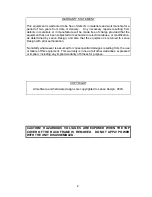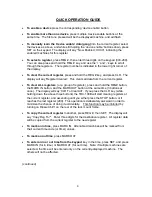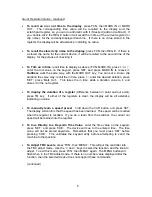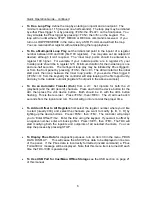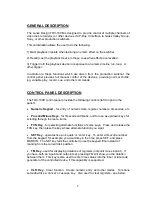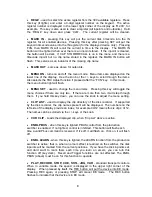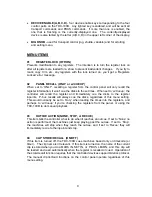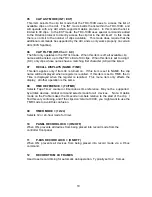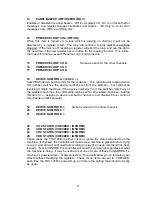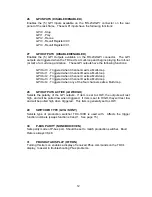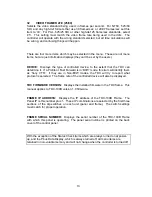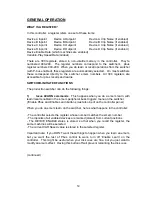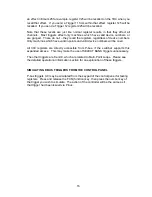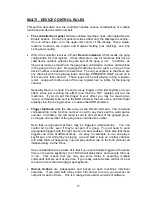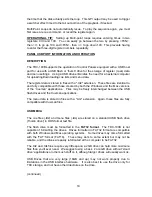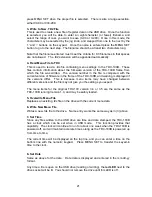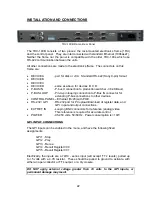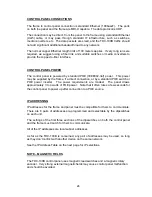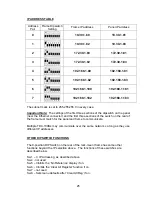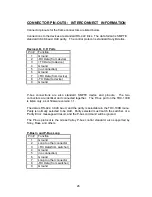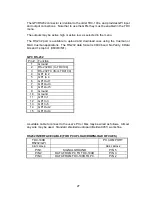
14
GENERAL OPERATION
WHAT IS A REGISTER?
In this controller, a register refers one set of these items:
Device A Inpoint
Device A Outpoint
Device A Clip Name (if enabled)
Device B Inpoint
Device B Outpoint
Device B Clip Name (if enabled)
Device C Inpoint
Device C Outpoint
Device C Clip Name (if enabled)
Device D Inpoint
Device D Outpoint
Device D Clip Name (if enabled)
Device Enable Data (which machines are enabled)
Variable-Play Speed Data (Global)
There are 300 registers, stored in non-volatile memory in the controller. They’re
numbered 000-299. The register numbers correspond to the switcher’s pbus
register numbers 000-299. When you do learn or recall operations from the switcher
(with P-bus enabled), these registers are automatically selected. On most switchers
these correspond directly to the switcher emem numbers. All 300 registers are
accessible for pbus recalls and learns.
SWITCHER-INITIATED FUNCTIONS
The production switcher can do the following things:
1)
Issue LEARN commands
. This happens when you do a emem learn, with
learn/recall enabled in the ‘emem peripheral buss triggers’ menu on the switcher.
(‘Enable Pbus and Enable Learn buttons must also be lit on the controller panel).
When you do an emem learn on the switcher, here’s what happens in the controller:
- The controller selects the register whose number matches the emem number
- The inpoints of all enabled devices are marked (stored) from current positions
- The DEVICE ENABLE status is stored, so that when you recall the register, the
same machines will be selected
- The current VAR Speed value is stored in the selected register.
Important note: If you DON’T want these things to happen when you learn an emem,
but you want the rest of Pbus control to work, turn off ‘Enable Learn’ on the
controller. This might be useful when your disk cues are fine, but you just want to
modify an emem effect. Having this button off will prevent remarking the disk cues.
(continued)
Содержание TDC-100B
Страница 28: ...28 Notes...


